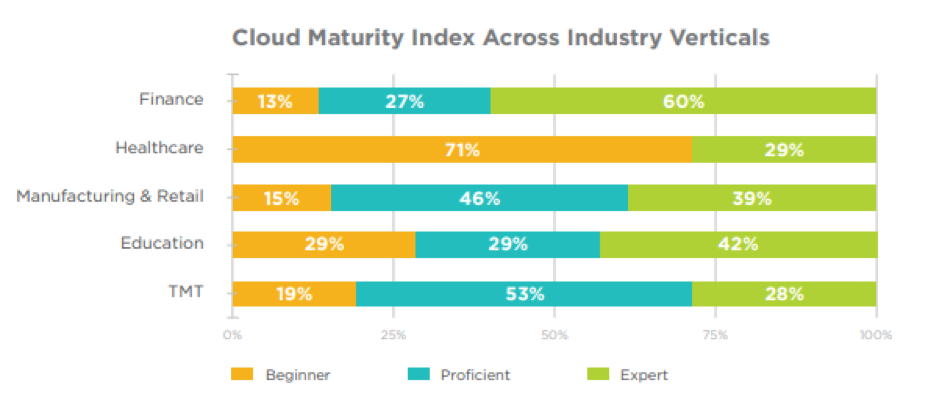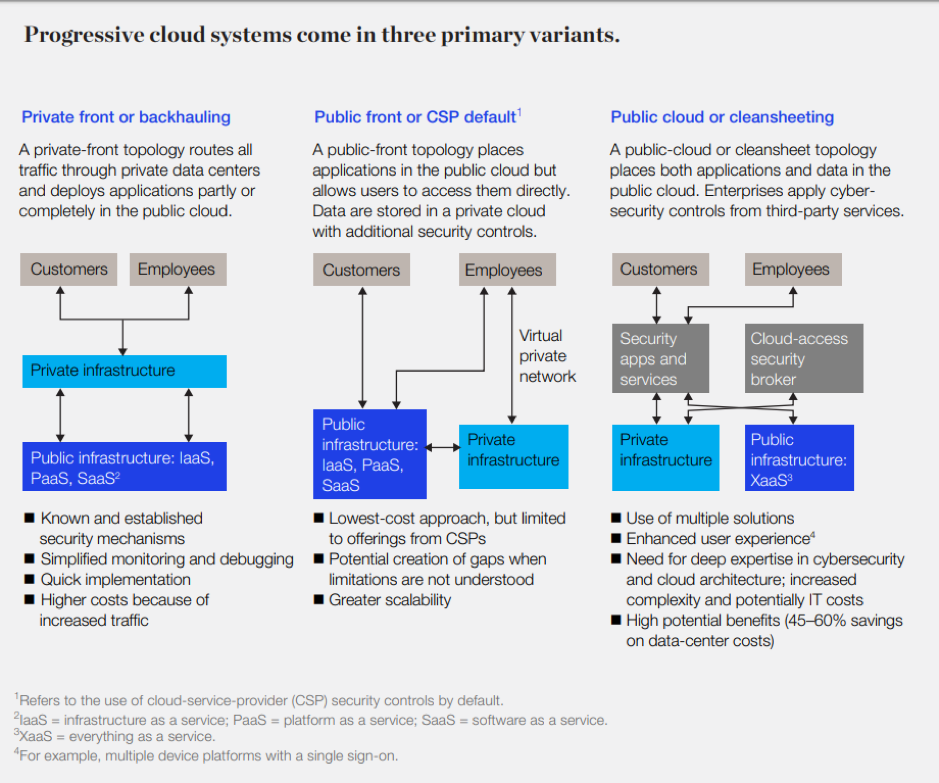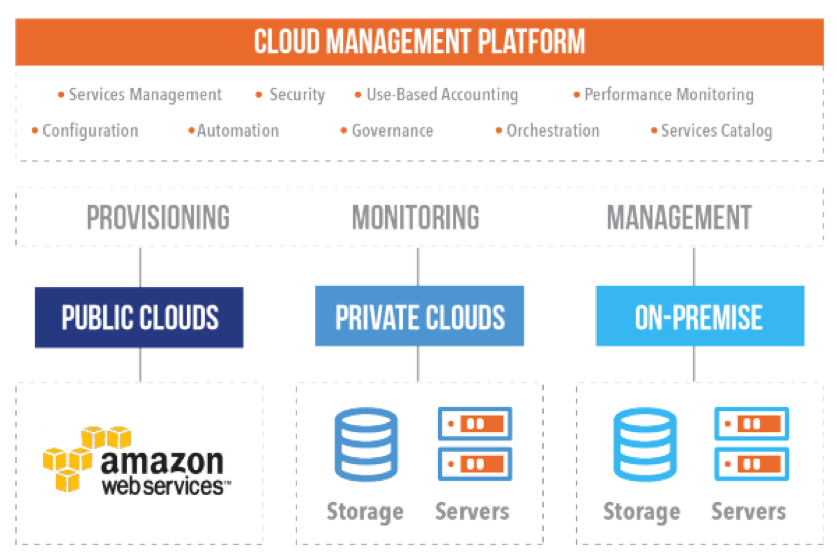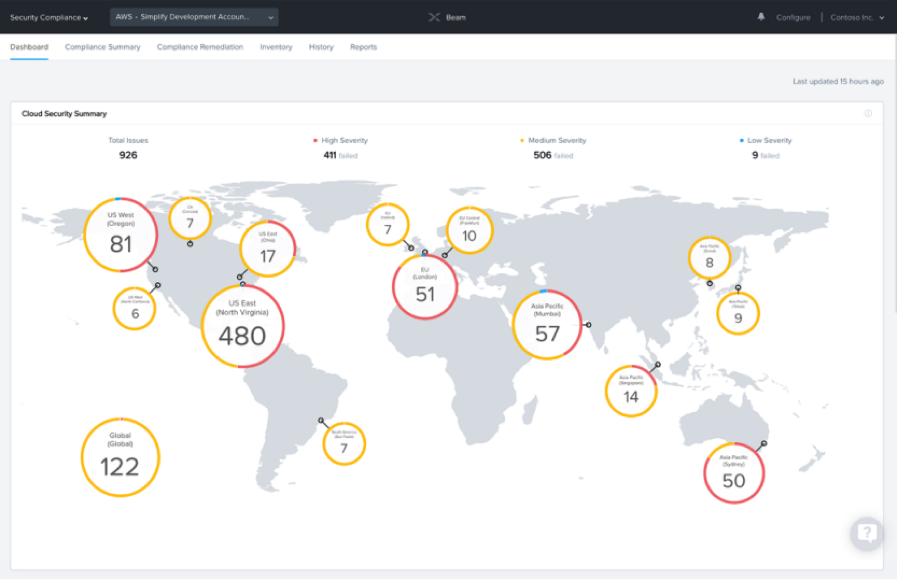Empirical evidence suggests that businesses typically spend around 20% of their initial software development costs on maintenance every year. Adaptive and corrective maintenance of applications and hardware eats up valuable budget and resources quickly. It introduces new complexities in operations and reduces efficiency for the duration of the upgrades.
Cloud-based infrastructure solutions can help eliminate these complexities by outsourcing the responsibility of management and upgrades. It can improve operational efficiency in the process. To remain competitive, organizations must deploy an IT infrastructure that's quick and easy to set up. The structure must also have a high tolerance for system failures and options for auto-recovery for each production system.
Use a Smart Cloud Adoption Strategy
Research from Nutanix found that organizations are increasingly adopting multi-cloud architectures to speed up innovation and facilitate agile business practices.
Many enterprises have reached significant maturity levels when it comes to cloud adoption. However, many companies in the commercial and SMB segments still have a long way to go.

Source: Nutanix Cloud Usage Report 2019
A smart cloud adoption strategy is one that results in the following outcomes for the organization:
Staff have more workplace mobility and can work anywhere, anytime with the same security and collaboration facilities as those available on the organizational premises
Applications don’t need to be managed or updated in-house because the organization has the option (and means) to switch providers to remain competitive
Business continuity is maintained due to faster recovery from incidents or disasters
Operational risk is reduced from security as well as compliance perspectives – security is layered and scalable
The need for buying, storing, and managing hardware, software, and data is greatly reduced, bringing down IT CapEx
The organization is not locked into long-term contracts with providers of proprietary infrastructure
Businesses pay only for the resources they use and consume
Data from Flexera shows that although organizations indicate that optimizing and managing costs is their number one priority, 35% of all cloud spend is wasted. Very few companies have the right sized workloads or have even leveraged full discounts from public cloud providers.
For many large companies with complex IT architectures, shifting data and applications to the public cloud involves a delicate balancing of technological, security-related, and financial issues. However, they can progressively transition to a hybrid cloud configuration without interrupting mission-critical operations with a “progressive” cloud system.

Source: McKinsey
Make the Infrastructure Agile and Convergent
New business demands make existing workloads redundant. Therefore, organizations need to make infrastructure standardization an ongoing process. A good rule of thumb to save costs is to deploy readymade, off-the-shelf solutions.
“In many cases, I&O leaders can simplify their infrastructure without significant additional capex or opex investment,” said Phil Dawson, VP of Research at Gartner.
“This creates a stronger platform to move forward and invest wisely to position IT at the heart of business growth.”
Dawson has a five-step modernization and simplification process of IT infrastructure to create optimal results:
Consolidate the number of servers in operation by removing underutilized or inappropriate systems that only add to the complexity of business functions
Reduce the types of logical assets – both hardware and software, virtual and physical – based on the requirements of various processes or workloads.
Unify the management of the entire infrastructure by adopting common tools and processes to manage software, network, and storage
Move to the cloud and reduce the number of physical locations; find ways to make data centers compact
Increase the workload efficiency and density by using virtualization to consolidate and automate workloads
A great example comes from Mellanox Technologies, a supplier of end-to-end Ethernet solutions for data centers and enterprises. They had been relying on multiple servers for on-site and remote engineering services, testing and development environments, and data analysis and reporting. They deployed a hyperconverged infrastructure and were able to fully automate operations as well as centralize VM management and storage.
“The Nutanix NX-1065 system, combined with our own half-width Top of Rack (TOR) switches, delivers on the promise of fast deployment and full automation,” said Udi Weinstein, VP of information technology at Mellanox.
“With the entire IT infrastructure filling just 2U of rack space, we are getting ready to consolidate our data centers further to achieve even greater IT efficiencies."
Businesses from all industries have room to optimize their cloud infrastructure, especially in hybrid and multi-cloud environments. There is an urgent need to understand infrastructure trends to tackle common implementation failures.
A GigaOm multi-cloud report on removing complexity advocates a “single pane of glass” approach to automation to reduce IaaS and PaaS spend and management time, i.e. using a single tool to monitor and manage several private, public and hybrid clouds, as well as traditional or legacy platforms, by placing an abstraction layer in between.

Source: Nutanix Whitepaper
Unify Diverse Systems to Improve Security
Security is one of the biggest and most significant challenges in managing IT infrastructure, cloud deployment, virtualization or convergence. Legacy infrastructure tends to be siloed, vulnerable to threats, incompatible with modern solutions and expensive to protect, especially with technology shifts in PaaS and IaaS.
Fugue’s Cloud Infrastructure Misconfiguration Survey Report found that 93% of IT professionals were concerned that their organization was running a high risk of security breaches due to misconfiguration. Nearly half of those surveyed attributed one of the major causes of misconfiguration to the existence of too many APIs and interfaces to adequately manage. In other words, they faced excessive complexity of the IT infrastructure.
Since security problems aggravate across proprietary, multiple, incompatible platforms, cloud adoption serves to decrease this complexity. Organizations would do better to start with PaaS and IaaS platforms that have strong built-in native security tools. They can use these to streamline access to network resources, automate security audits, create multi-location backups, and put in place data loss protection (DLP) and disaster recovery plans before attempting to implement custom-built third-party or in-house security solutions.
Unifying infrastructure management with a cross-platform, multi-cloud security solution such as Nutanix Beam gives IT admins centralized and complete visibility across all storage, transmission and access points in the organization. It also helps identify security vulnerabilities, prioritize remediation, and run fixes and validated data integrity — all in real-time.

Cut Down to Scale
In a Computerworld article, Bryson Koehler, CIO of The Weather Company, explained why complexity grows over time.
"Systems are built to do one thing, and then they're modified, morphed and bastardized to do things they were never meant to do," Koehler said.
As a result, organizations often end up with redundant and incompatible systems that are expensive to operate and maintain. This slows innovation and growth potential.
How can they estimate operational costs for new technology? How can a small IT department manage a massive network of devices and applications? How can companies balance data security with ease of access?
Unfortunately, there are no easy answers to these questions.
“Sometimes you have to turn something off and see who yells,”said Dee Burger of Capgemini Consulting.
Featured image: Pixabay
Dipti Parmar is a contributing writer. She has written for CIO.com, Entrepreneur, CMO.com and Inc. magazine. Follow her on Twitter @dipTparmar.
© 2019 Nutanix, Inc. All rights reserved. For additional legal information, please go here.

